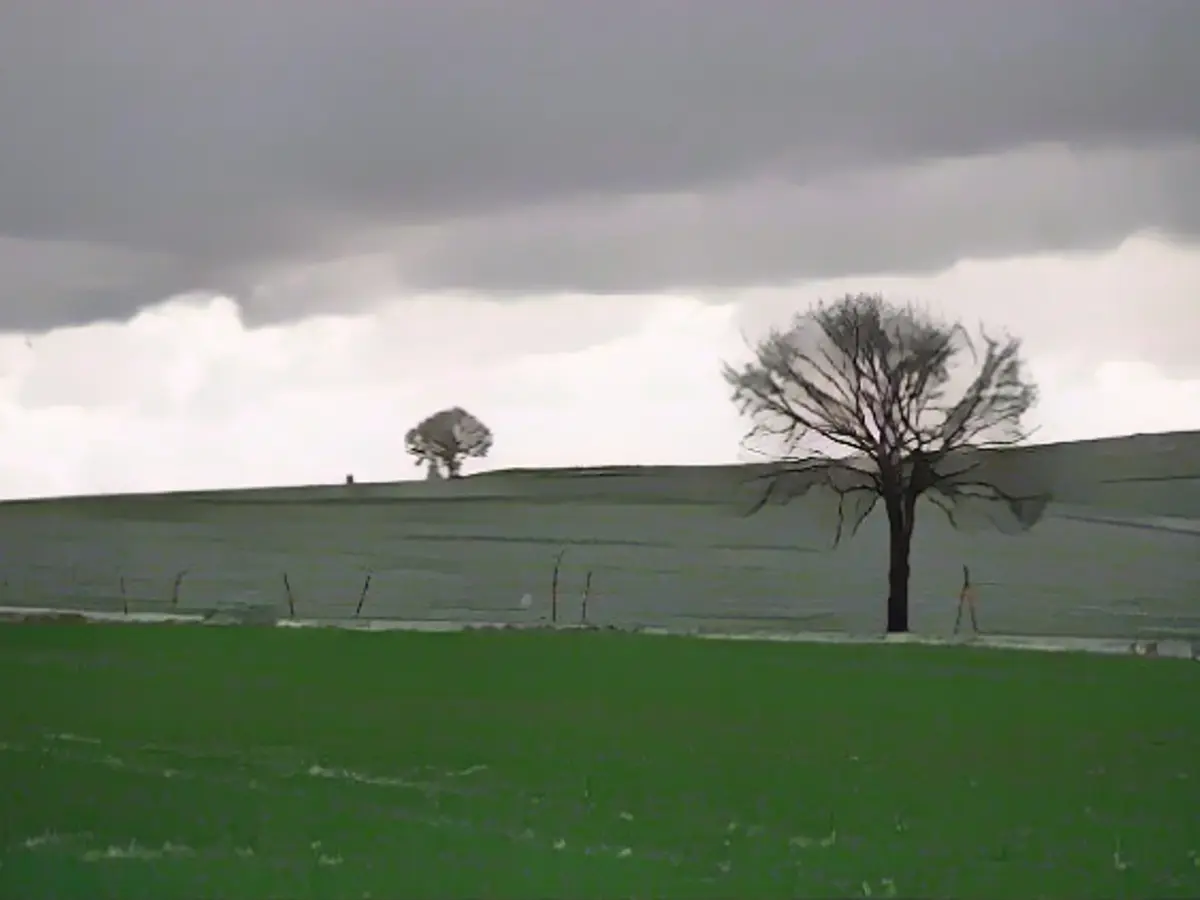Weather chaos in Germany - Wet fall helps the plants
After years of drought, there is plenty of precipitation, in the form of rain in October and snow in many places at the end of November: the unusually wet autumn is bringing Germany's water balance back to normal. What does this mean for farmers, hobby gardeners and forest owners?
The prospects for the coming year are promising: the rainfall of the past few weeks is bringing moisture back to Germany. The parched soils are soaking up the vital moisture like a sponge. However, the consequences of the drought will affect fields, farmland, forests and meadows for a long time to come.
Since the drought year of 2018, the German water balance has been in a tight spot: for several years in a row, significantly less rain fell in Germany than would have been expected on a long-term average. This was compounded by mild winters with little snow and dry summers with unusually high temperatures. The consequences of the lack of rain were not only serious for agriculture. The forests with their sometimes fragile tree populations and the soil in general also suffered badly.
Looking at the precipitation balance to date, 2023 actually provides a reason to breathe a sigh of relief. The abundant rainfall in autumn in particular ensured that the topsoil is now sufficiently saturated throughout Germany, as the data from the German Drought Monitor shows. For the first time in years, the map of Germany's plant-available water situation appears relaxed again. The phase of extreme drought appears to be over. The extreme drought is apparently a thing of the past.
This is good news not only for farmers: The degree of wetness in the soil is enormously important for the overall water balance. Only if the topsoil is always sufficiently soaked can the complicated cycle of groundwater recharge remain intact and sufficient amounts of precipitation reach the deeper layers.
In November, the continuous rainfall amounted to around 500 liters per square meter in places. A large part of the annual precipitation was therefore concentrated in just a few weeks. This naturally creates its own problems: In the lowlands, the soil is quickly saturated, and in the cool fall, evaporation is hardly a factor. In addition, the vegetation is hardly "thirsty" after flowering and harvesting. The saturated clods can no longer absorb any additional water.
As a result, many fields and meadows - even away from floodplains and riverbanks - are under water. The soil is soaked and in many places it is no longer possible to work with heavy equipment. After the second half of the summer, which was very wet in places, this has once again resulted in severe restrictions for agriculture.
"However, the annual precipitation so far should give us hope, especially with a view to the vegetation phase next year," says ntv meteorologist Björn Alexander. "The experimental long-term forecasts are currently also predicting a significant increase in precipitation for December, January and February 2024." After years of drought, nature and the drought-stricken German forests in particular could do with the additional precipitation.
It is already clear that the surface water reservoirs in the topsoil are now comparatively well filled. With a rainy fall and a wet winter behind it, nature will be able to cope much better with a potentially dry spring next year than in previous years. And of course this applies to hobby gardeners as well as the entire agricultural and forestry sector. Every drop of rain and every snowflake helps nature through the coming year.
Lesen Sie auch:
- "All is not yet lost"
- Infineon with 17 percent opportunity
- The secret to becoming a runner is good daily habits
- This abundant rainfall is reflected in various map-data-infographics, showing a significant improvement in Germany's water balance compared to the drought-stricken years.
- Björn Alexander, the meteorologist from ntv, suggests that the excessive rainfall in the autumn and the predicted increase in precipitation for the winter months will be beneficial for Agriculture, helping to boost crop yields and improve soil conditions.
- In schools, the topic of weather and its impact on Agriculture is a popular subject in Education, and students can learn about the importance of drinking water for both plants and humans in an agricultural context.
Source: www.ntv.de







